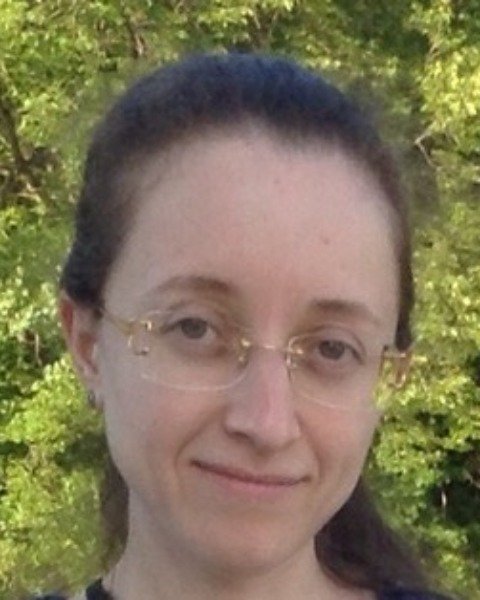Rapid Fire Abstracts
AI-Based Discrimination of Cardiac Amyloidosis from Hypertrophic Cardiomyopathy Using Cardiac MRI 3D Shape Phenomics (RF_TH_163)
- FH
Fereshteh Hasanzadeh, MSc
Masters Student
University of Calgary, Canada - FH
Fereshteh Hasanzadeh, MSc
Masters Student
University of Calgary, Canada - RM
Rylan Marianchuk, BSc
Masters Student
University of Calgary, Canada - SD
Steven Dykstra, PhD
PhD Student
University of Calgary, Canada - TB
Talia A. Beckie, BEng
Cardiac Imaging Systems Engineer
Libin cardiovascular Institute, University of Calgary, Canada - CW
Connor J. White, N/A
High School Student
Libin Cardiovascular Institute, University of Calgary, Canada - AL
Andrew Loe, BSc
Master's Student
Libin Cardiovascular Institute, University of Calgary, Canada, Canada - JF
Jacqueline Flewitt, MSc
Manager of Strategic Partnerships
Libin Cardiovascular Institute; University of Calgary, Canada - SR
Sandra Rivest, RN
Research Coordinator
Libin Cardiovascular Institute; University of Calgary, Canada - GP
Grant Peters, MD
Clinical Assistant Professor
Libin Cardiovascular Institute, University of Calgary, Canada - AH
Andrew G. Howarth, MD, PhD
Associate Professor
Libin Cardiovascular Institute; University of Calgary, Canada - CL
Carmen P. Lydell, MD
Clinical Associate Professor
Libin Cardiovascular Institute; University of Calgary, Canada - LK
Louis Kolman, MD
Clinical Assistant Professor
Libin Cardiovascular Institute; University of Calgary, Canada - RM
Robert J.H. Miller, MD
Clinical Assistant Professor
Libin Cardiovascular Institute; University of Calgary, Canada - NF
Nowell Fine, MD, MSc
Cardiologist / Associate Professor
Libin Cardiovascular Institute of Alberta, University of Calgary, Canada 
Dina Labib, MD, PhD, FSCMR
Associate Scientific Director, Personalized Diagnostics Program; Adjunct Assistant Professor
University of Calgary, Canada
James A. White, MD
Professor
Libin Cardiovascular Institute; University of Calgary, Canada
Presenting Author(s)
Primary Author(s)
Co-Author(s)
.png)
Figure 2: Left: ROC curve of the optimal SVM classifier for the discrimination of cardiac amyloidosis from hypertrophic cardiomyopathy (HCM) in the unseen test set. Right: Corresponding confusion matrix of predicted versus actual disease states in the unseen test set.
.png)
Background:
Accurate discrimination of cardiac amyloidosis (CA) from hypertrophic cardiomyopathy (HCM) using cine cardiac magnetic resonance (CMR) alone is challenging, often demanding the incremental use of tissue mapping or late gadolinium enhancement (LGE) techniques. Whether 3D shape phenomics is capable of accurately classifying CA from HCM from routinely acquired 2D cines is unknown. In this study, we evaluated the accuracy of machine learning-based classification of CA versus HCM from 3D shape phenomics.
Methods:
A total of 505 patients with confirmed ATTR CA and HCM were studied (405 HCM and 100 CA). CA was confirmed with pyrophosphate imaging or invasive biopsy (58 ATTR, 42 AL). Patients were identified from the Cardiovascular Imaging Registry of Calgary (CIROC) and Canadian Registry for Amyloidosis Research (CRAR). All patients underwent CMR at 3T using a standardized imaging protocol. 3D shape phenomics was performed using locally developed software, leveraging segmentation of long- and short-axis images, followed by automated image alignment and bi-layer meshing. A finite element model of 456 hexahedral elements was generated at end-diastole (Figure 1). For the current study, we used global level 3D shape features inclusive of 3D blood pool volume, 3D myocardial volume, 3D length (endo and epi), 3D max width (endo and epi), and 3D surface area (endo and epi); combining these 8 features with age, sex, and BMI. Multiple machine learning classifiers were explored for the differentiation of CA versus HCM. The dataset was randomly split into training and test sets (80% / 20%) with stratification to preserve class distribution. 10-fold stratified cross-validation was used for model training and validation with model performance evaluated using data from the unseen test set. Performance was assessed using AUC, accuracy, precision, recall, and F1 score.
Results:
Optimal model performance was achieved using a Support Vector Machine (SVM) classifier. This model delivered an AUC of 0.97 on unseen data for discrimination of CA from HCM (Figure 2). Corresponding values for accuracy, precision, recall, and F1 score were 0.90, 0.91, 0.91, and 0.91, respectively. Evaluation of permutation importance, assessing the relative contribution of features towards overall model performance, identified the top discriminating features to be six 3D shape model features, followed by age and BMI.
Conclusion:
We demonstrated 3D cardiac shape phenomics to discriminate CA from HCM using only routine 2D cine image data. Ongoing work evaluating model generalizability across unique clinical environments is planned. However, our inaugural work supports 3D shape phenomics to deliver clinically relevant value for the differentiation of cardiomyopathy etiology, expanding the diagnostic value of routine CMR cine imaging.
Figure 1: Example 3D Phenomics models generated in a patient with sarcomeric hypertrophic cardiomyopathy (HCM) (left) and ATTR cardiac amyloidosis (CA) (right)..png)
Figure 2: Left: ROC curve of the optimal SVM classifier for the discrimination of cardiac amyloidosis from hypertrophic cardiomyopathy (HCM) in the unseen test set. Right: Corresponding confusion matrix of predicted versus actual disease states in the unseen test set. .png)

